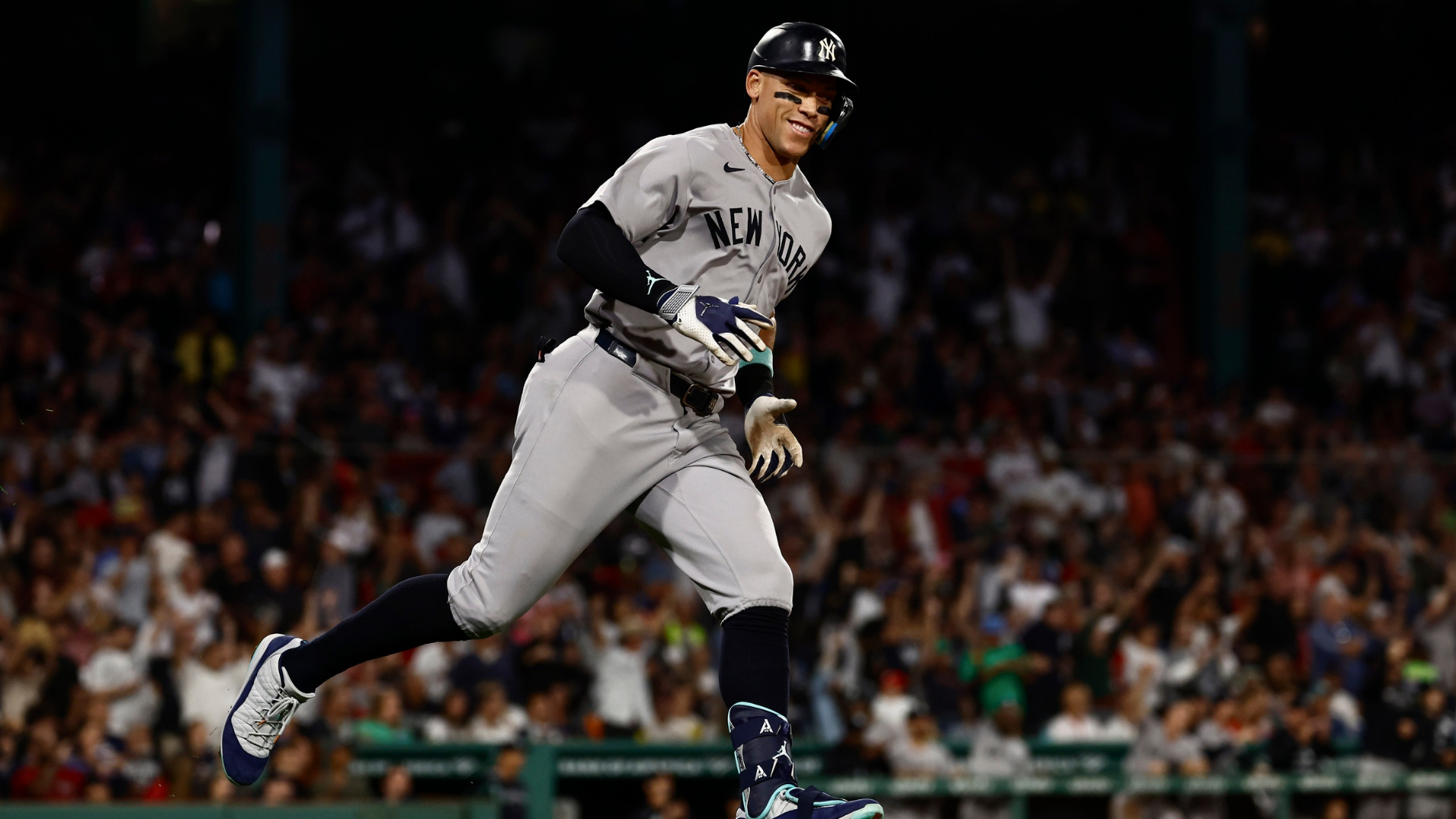
Aaron Judge continues to inch his way up the New York Yankees’ all-time home run list. At 33 years old, the captain has already passed Joe DiMaggio and Yogi Berra, and he now sits just behind Lou Gehrig, Mickey Mantle, and Babe Ruth. That puts him in the heart of Yankees lore. But as Judge’s totals climb, so do the debates about whether he can realistically reach 600 home runs before his contract expires.
One national voice, USA Today’s Bob Nightengale, recently cast doubt on Judge’s chances. His argument rests on history: of the nine players to hit 600 or more career home runs, every single one had already cleared 410 by their age-33 season. Judge currently sits in the 360s. Nightengale also pointed out that only seven players have ever added more than 200 homers after turning 34, with Barry Bonds leading the list at 351.
That comparison, however, ignores one of the most apparent differences: Bonds’ production surge came during an era clouded by performance-enhancing drugs.
Judge vs. the Steroid Era
Judge has never been linked to steroids. His rise is the product of raw talent, elite plate discipline, and the ability to adjust in an age when pitching is more dominant than ever. Average fastball velocity has climbed nearly 3 mph in the last two decades, and today’s relievers routinely come out of the bullpen throwing 98 or higher. Hitting 40-plus homers in this environment is not the same as doing it during the steroid era.
Bonds’ late-career power boom came when offensive numbers were inflated across the league. Allegations of steroid use surrounded him and other sluggers like Rafael Palmeiro and Sammy Sosa, whose names still spark debate whenever Hall of Fame ballots come up. Judge’s legacy won’t carry that cloud. His home runs arrive in an era where strikeout rates are historically high and pitchers are armed with advanced pitch design and tracking technology.
That distinction matters. If Judge finishes his career with more than 600 home runs, he won’t just join a historic club; he’ll stand as one of the cleanest examples of how far natural ability and discipline can take a player.
Injuries Are the X-Factor
Of course, Nightengale wasn’t wrong about one key variable: durability. Judge’s biggest obstacle is staying on the field. He has missed significant time due to rib, oblique, and toe injuries in recent years, and even in 2025, he spent weeks nursing a sprained elbow.
When Judge plays, his production is undeniable. He’s hit at least 48 homers in three of the last four seasons, including a record 62 in 2022 and 58 more in 2024. His per-162-game pace remains over 50 home runs. The only thing that can derail his path to 600 is a trip to the injured list.
If Judge averages 45 home runs a year over the next six seasons, he’ll finish around 632, surpassing Mantle and Gehrig along the way. Even if injuries chip away at that total and he slides closer to 40 annually, he would still push past 600, a plateau that bonds him with the likes of Ruth, Hank Aaron, and Willie Mays.
The Yankees could help his cause by easing his defensive workload. Moving Judge into a more regular designated hitter role would reduce the wear and tear on his 6-foot-7 frame. That will only become more pressing once Giancarlo Stanton’s contract winds down.
Clean Power in a Tougher Era
Judge doesn’t need to pad his totals with late-career numbers inflated by steroids. The questions about his durability are fair. But when it comes to the legitimacy of his production, there’s no doubt.
If he continues to hit like this—and if the Yankees can keep him healthy—Judge will do what Bonds and others did with artificial help. Only this time, it’ll be clean. And if the math holds, by the end of his contract, he could stand as the most legitimate 600-home run slugger baseball has ever seen.



